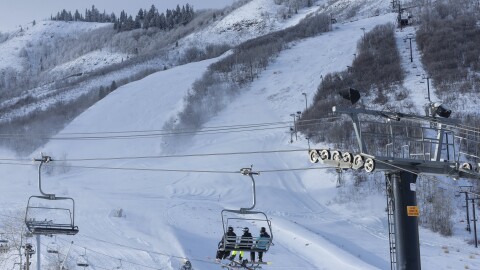-
The city started closing off a small portion of its 220 miles long trail system five years ago to prevent increased erosion in the colder and wetter season.
-
In addition to a lack of snow, warmer temperatures have thwarted snowmaking.
-
The pattern generally means cool and wet weather for the Northwest and northern Rockies, but drier conditions in the Southwest.
-
A new scientific analysis shows that fall temperatures are rising across the country because of climate change, especially in the Mountain West. More than simply a delay in sweater weather, experts say this trend has more serious impacts.
-
Parts of California, Oregon and Washington state will experience extreme heat at least through Tuesday, forecasters say.
-
A powerful 8.8-magnitude earthquake in Russia's Far East is sending tsunami waves to Hawaii, Alaska, California and Oregon. More countries, like Peru and Chile, are bracing for impact.
-
The National Oceanic and Atmospheric Administration's Space Weather Prediction Center says a severe geomagnetic storm is possible Sunday night.
-
Drought this spring has increased significantly across our region, with some states already hitting the highest levels.
-
A new scientific analysis shows spring is getting warmer across the U.S. because of climate change. Some of the fastest-warming cities are in the Mountain West, threatening to shrink water supplies and increase wildfire risk.
-
A few parts of the country may get a white Christmas in 2024, but the majority will not. And in the future, shifts in weather patterns driven by global warming may make them even less likely.
-
More precipitation is falling as rain, instead of snow — which impacts ski resorts, tourism and ecosystems.
-
The winter cold has arrived in Boise and across Idaho. The cities of Boise, Nampa and Caldwell all have several locations open to the public where those without homes can go and stay warm, as well as access additional resources.

















